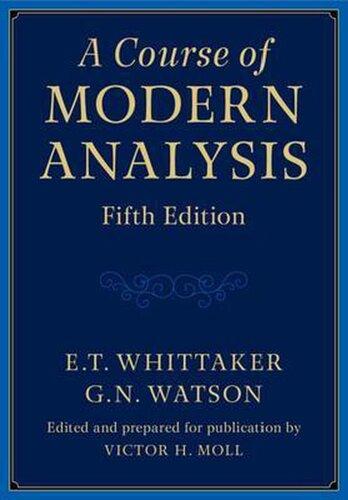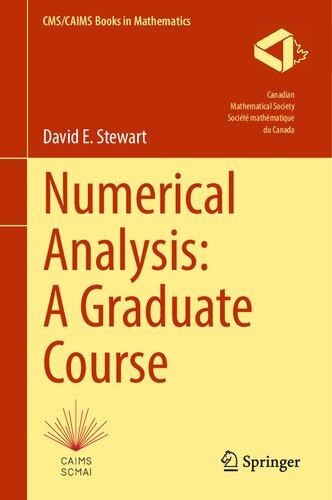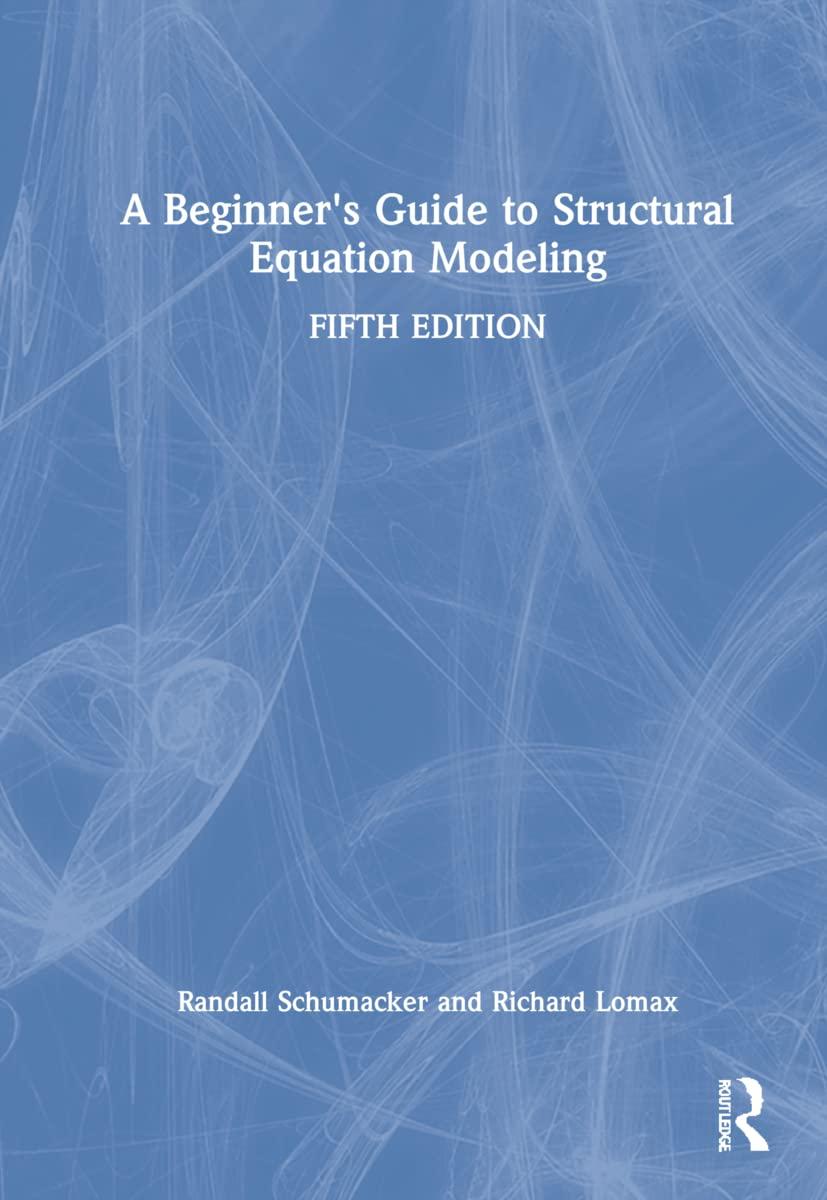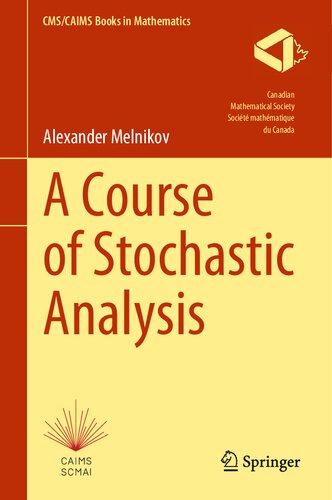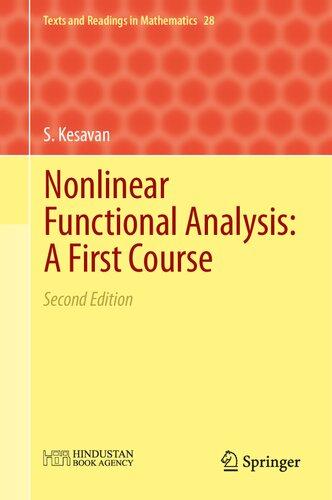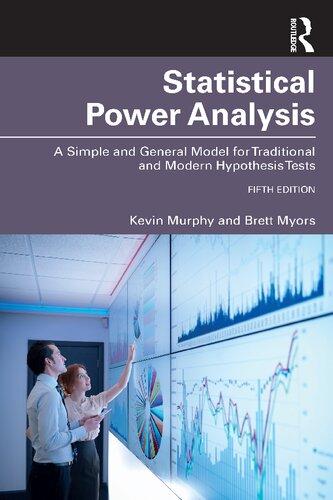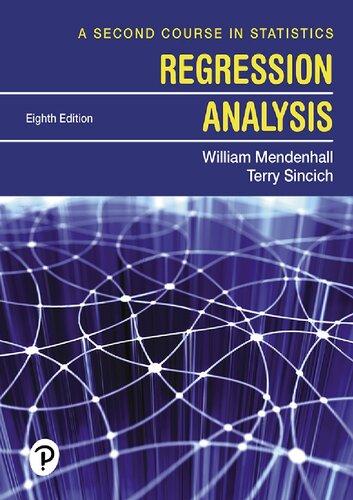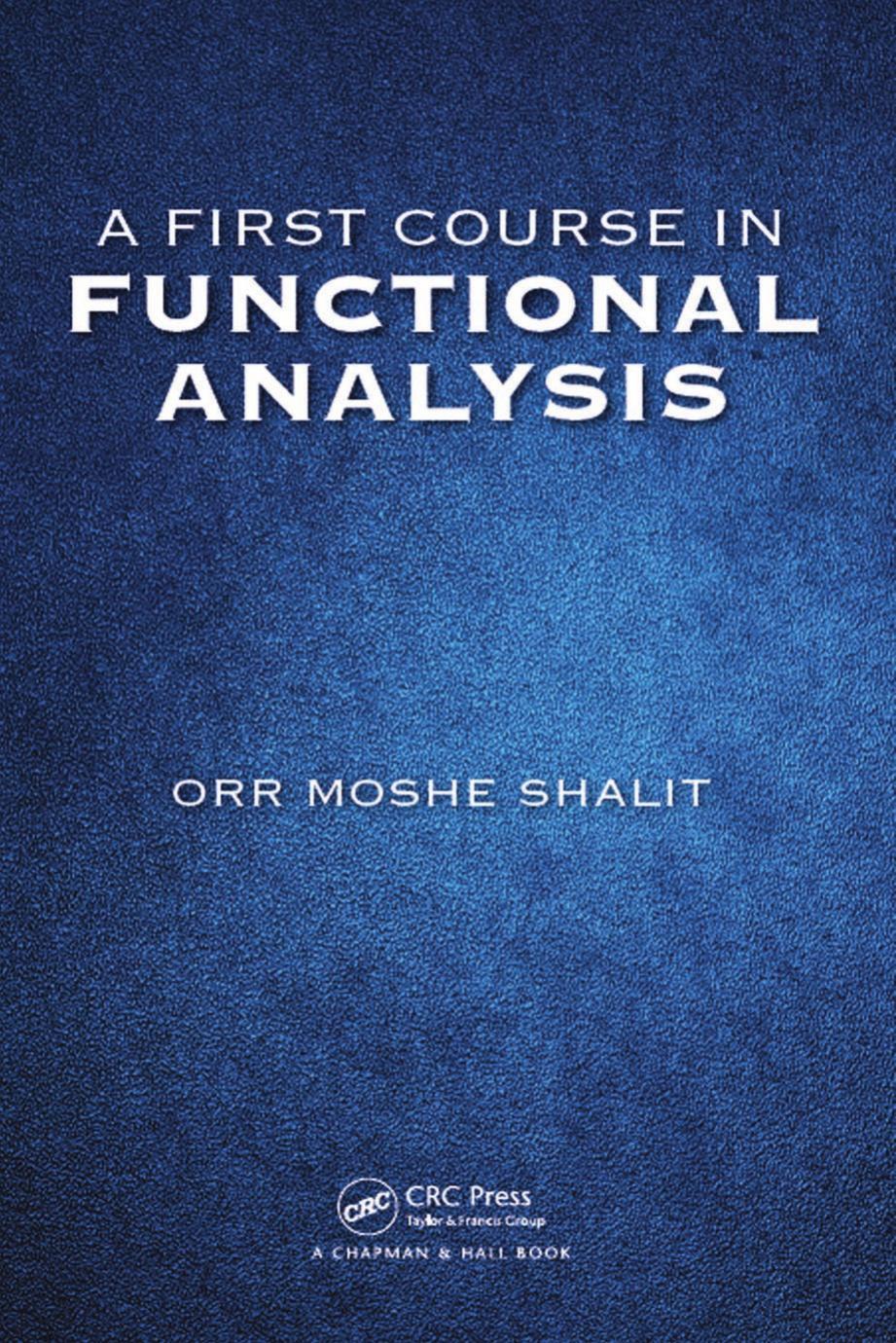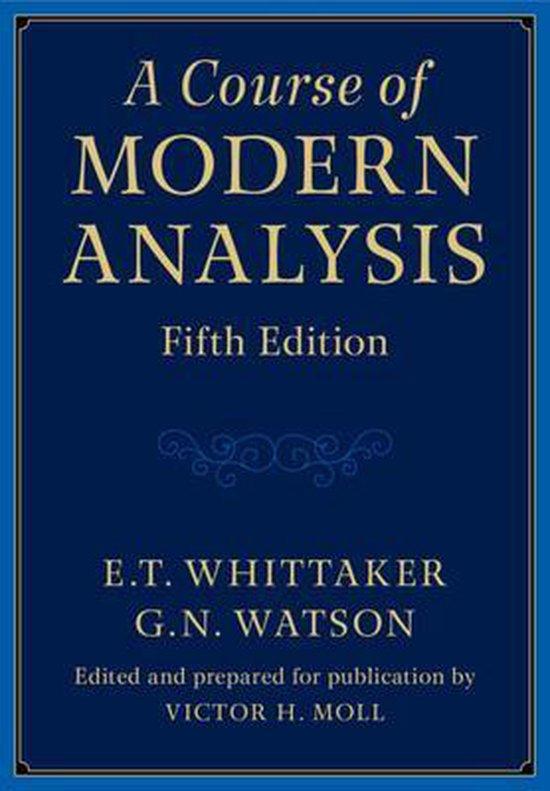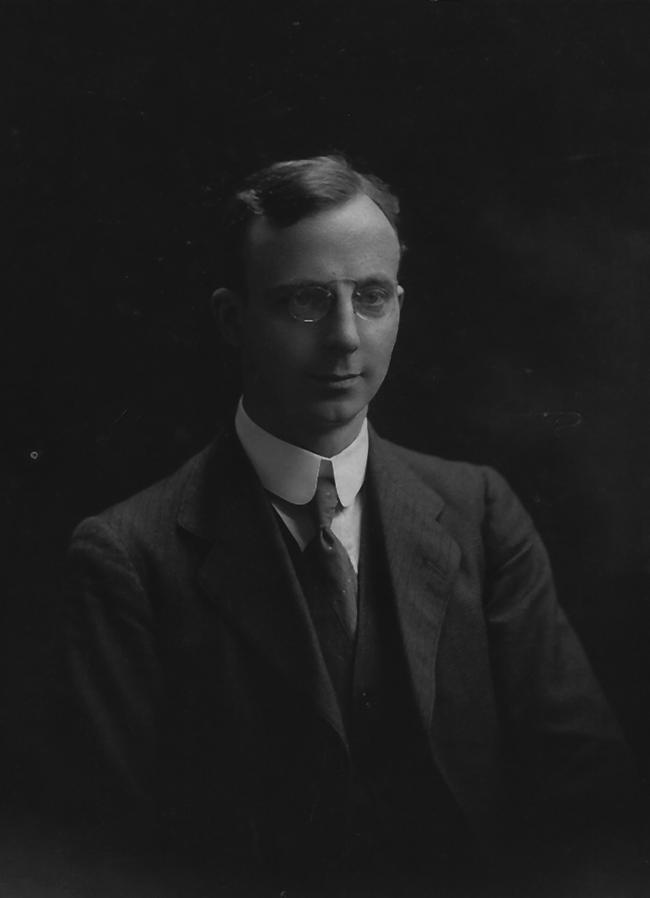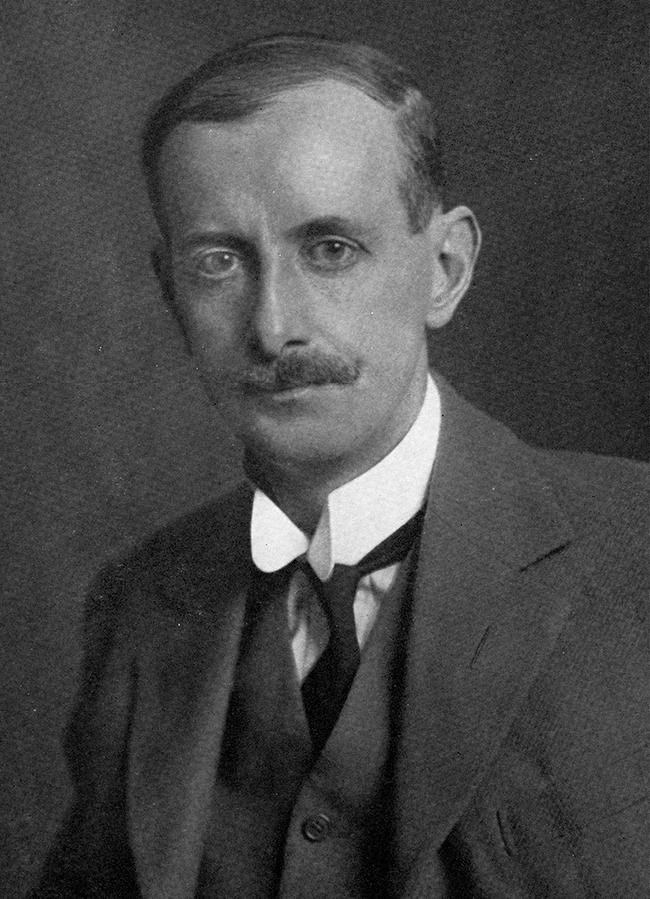ACOURSEOFMODERNANALYSIS
FifthEdition
Anintroductiontothegeneraltheoryofinfinite processesandofanalyticfunctionswithanaccount oftheprincipaltranscendentalfunctions
E.T.WHITTAKERANDG.N.WATSON
Fiftheditioneditedandpreparedforpublicationby VictorH.Moll TulaneUniversity,Louisiana
UniversityPrintingHouse,CambridgeCB28BS,UnitedKingdom OneLibertyPlaza,20thFloor,NewYork,NY10006,USA 477WilliamstownRoad,PortMelbourne,VIC3207,Australia
314–321,3rdFloor,Plot3,SplendorForum,JasolaDistrictCentre,NewDelhi–110025,India
103PenangRoad,#05–06/07,VisioncrestCommercial,Singapore238467 CambridgeUniversityPressispartoftheUniversityofCambridge. ItfurtherstheUniversity’smissionbydisseminatingknowledgeinthepursuitof education,learning,andresearchatthehighestinternationallevelsofexcellence.
www.cambridge.org
Informationonthistitle: www.cambridge.org/9781316518939
DOI: 10.1017/9781009004091
©CambridgeUniversityPress1902,1915,1920,1927,2021
Thispublicationisincopyright.Subjecttostatutoryexception andtotheprovisionsofrelevantcollectivelicensingagreements, noreproductionofanypartmaytakeplacewithoutthewritten permissionofCambridgeUniversityPress.
Firstedition1902
Secondedition1915
Thirdedition1920
Fourthedition1927
Reprinted1935,1940,1946,1950,1952,1958,1962,1963
ReissuedintheCambridgeMathematicalLibrarySeries1996
Sixthprinting2006
Fifthedition2021
PrintedintheUnitedKingdombyTJBooksLimited,PadstowCornwall AcataloguerecordforthispublicationisavailablefromtheBritishLibrary. ISBN978-1-316-51893-9Hardback
CambridgeUniversityPresshasnoresponsibilityforthepersistenceoraccuracyof URLsforexternalorthird-partyinternetwebsitesreferredtointhispublication anddoesnotguaranteethatanycontentonsuchwebsitesis,orwillremain, accurateorappropriate.
2.35Cauchy’stestforabsoluteconvergence
3.62Arealfunction,ofarealvariable,continuousinaclosedinterval,attainsitsupper
3.63Arealfunction,ofarealvariable,continuousinaclosedinterval,attainsallvalues betweenitsupperandlowerbounds
4.13Ageneraltheoremonintegration
4.2Differentiationofintegralscontainingaparameter
4.4Infiniteintegrals
4.41Infiniteintegralsofcontinuousfunctions.Conditionsforconvergence
4.42Uniformityofconvergenceofaninfiniteintegral
4.43Testsfortheconvergenceofaninfiniteintegral
4.44Theoremsconcerninguniformlyconvergentinfiniteintegrals
4.51Theinversionoftheorderofintegrationofacertainrepeatedintegral
4.61Thefundamentaltheoremofcomplexintegration
4.62Anupperlimittothevalueofacomplexintegral
4.7Integrationofinfiniteseries
5.2Cauchy’stheoremontheintegralofafunctionroundacontour
5.21Thevalueofananalyticfunctionatapoint,expressedasanintegraltakenrounda contourenclosingthepoint
5.3Analyticfunctionsrepresentedbyuniformlyconvergentseries
5.32Analyticfunctionsrepresentedbyinfiniteintegrals
5.61Thenatureofthesingularitiesofone-valuedfunctions
5.62The‘pointatinfinity’
5.63Liouvillle’stheorem
5.64Functionswithnoessentialsingularities
5.7Many-valuedfunctions
5.8Miscellaneousexamples
6TheTheoryofResidues;ApplicationtotheEvaluationofDefiniteIntegrals
6.2Theevaluationofdefiniteintegrals
6.21Theevaluationoftheintegralsofcertainperiodicfunctionstakenbetweenthe limits 0 and 2π
6.22Theevaluationofcertaintypesofintegralstakenbetweenthelimits −∞ and +∞
6.23Principalvaluesofintegrals
6.3Cauchy’sintegral
∫
6.31Thenumberofrootsofanequationcontainedwithinacontour
6.4Connexionbetweenthezerosofafunctionandthezerosofitsderivative
6.5Miscellaneousexamples
7TheExpansionofFunctionsinInfiniteSeries
7.1AformuladuetoDarboux
7.2TheBernoulliannumbersandtheBernoullianpolynomials
7.21TheEuler–Maclaurinexpansion
7.3Bürmann’stheorem
7.31Teixeira’sextendedformofBürmann’stheorem
7.32Lagrange’stheorem
7.4Theexpansionofaclassoffunctionsinrationalfractions
7.5Theexpansionofaclassoffunctionsasinfiniteproducts
7.6ThefactortheoremofWeierstrass
7.7Expansioninaseriesofcotangents
7.8Borel’stheorem
7.81Borel’sintegralandanalyticcontinuation
7.9Miscellaneousexamples
8AsymptoticExpansionsandSummableSeries
8.1Simpleexampleofanasymptoticexpansion
8.2Definitionofanasymptoticexpansion
8.3Multiplicationofasymptoticexpansions
9.1DefinitionofFourierseries
9.11Natureoftheregionwithinwhichatrigonometricalseriesconverges
9.12Valuesofthecoefficientsintermsofthesumofatrigonometricalseries
9.2OnDirichlet’sconditionsandFourier’stheorem
9.21TherepresentationofafunctionbyFourierseriesforrangesotherthan (−π,π)
9.22Thecosineseriesandthesineseries
9.3ThenatureofthecoefficientsinaFourierseries
9.31DifferentiationofFourierseries
9.32Determinationofpointsofdiscontinuity
9.4Fejér’stheorem
9.41TheRiemann–Lebesguelemmas
9.43TheDirichlet–BonnetproofofFourier’stheorem
9.44TheuniformityoftheconvergenceofFourierseries
9.5TheHurwitz–LiapounofftheoremconcerningFourierconstants
9.6Riemann’stheoryoftrigonometricalseries
9.61Riemann’sassociatedfunction
9.62PropertiesofRiemann’sassociatedfunction;Riemann’sfirstlemma
9.7Fourier’srepresentationofafunctionbyanintegral
10.32Derivationofasecondsolutioninthecasewhenthedifferenceoftheexponentsis anintegerorzero
D(λ) = 0 hasat leastoneroot
12TheGamma-Function
12.1DefinitionsoftheGamma-function
12.11Euler’sformulafortheGamma-function
12.12ThedifferenceequationsatisfiedbytheGamma-function
12.13Theevaluationofageneralclassofinfiniteproducts
12.14ConnexionbetweentheGamma-functionandthecircularfunctions
12.15Themultiplication-theoremofGaussandLegendre
12.16ExpansionforthelogarithmicderivatesoftheGamma-function
12.2Euler’sexpressionof Γ(z) asaninfiniteintegral
12.21Extensionoftheinfiniteintegraltothecaseinwhichtheargumentofthe Gamma-functionisnegative
12.22Hankel’sexpressionof Γ(z) asacontourintegral
12.3Gauss’infiniteintegralfor Γ (z)/Γ(z)
12.31Binet’sfirstexpressionfor log Γ(z) intermsofaninfiniteintegral
12.32Binet’ssecondexpressionfor log Γ(z) intermsofaninfiniteintegral
12.33TheasymptoticexpansionofthelogarithmsoftheGamma-function
12.4TheEulerianintegralofthefirstkind
12.41ExpressionoftheEulerianintegralofthefirstkindintermsoftheGamma-function
12.42EvaluationoftrigonometricalintegralsintermsoftheGamma-function
12.43Pochhammer’sextensionoftheEulerianintegralofthefirstkind
12.5Dirichlet’sintegral
12.6Miscellaneousexamples
13TheZeta-FunctionofRiemann
13.1Definitionofthezeta-function
13.11Thegeneralisedzeta-function
13.12Theexpressionof ζ(s, a) asaninfiniteintegral
13.13Theexpressionof ζ(s, a) asacontourintegral
13.14Valuesof ζ(s, a) forspecialvaluesof s
13.15TheformulaofHurwitzfor ζ(s, a) when σ< 0
13.2Hermite’sformulafor ζ(s, a)
13.21DeductionsfromHermite’sformula
13.3Euler’sproductfor ζ(s)
13.31Riemann’shypothesisconcerningthezerosof ζ(s)
13.4Riemann’sintegralfor ζ(s)
13.5Inequalitiessatisfiedby ζ(s, a) when σ> 0
13.51Inequalitiessatisfiedby
13.6Theasymptoticexpansionof log
13.7Miscellaneousexamples
14TheHypergeometricFunction
14.1Thehypergeometricseries
14.11Thevalueof F(a, b; c;1) when Re(c a b) > 0
14.2Thedifferentialequationsatisfiedby F(a, b; c; z)
14.3SolutionsofRiemann’s P-equation
14.4Relationsbetweenparticularsolutions
14.5Barnes’contourintegrals
14.51Thecontinuationofthehypergeometricseries
14.52Barnes’lemma
14.53Theconnexionbetweenhypergeometricfunctionsof z andof 1 z
14.6SolutionofRiemann’sequationbyacontourintegral
14.61Determinationofanintegralwhichrepresents P(
)
14.7Relationsbetweencontiguoushypergeometricfunctions
14.8Miscellaneousexamples
15LegendreFunctions
15.1DefinitionofLegendrepolynomials
15.11Rodrigues’formulafortheLegendrepolynomials
15.12Schläfli’sintegralfor Pn(z)
15.13Legendre’sdifferentialequation
15.14TheintegralpropertiesoftheLegendrepolynomials
15.2Legendrefunctions
15.21Therecurrenceformulae
15.22Murphy’sexpressionof Pn(z) asahypergeometricfunction
15.23Laplace’sintegralsfor
)
15.3Legendrefunctionsofthesecondkind
15.31Expansionof Qn(z) asapowerseries
15.32Therecurrenceformulaefor Qn(z)
15.33TheLaplacianintegralforLegendrefunctionsofthesecondkind
15.34Neumann’sformulafor Qn(z),when n isaninteger
15.4Heine’sdevelopmentof (t z) 1
15.41Neumann’sexpansionofanarbitraryfunctioninaseriesofLegendrepolynomials
15.5Ferrers’associatedLegendrefunctions Pm n (z) and Qm n (z)
15.51TheintegralpropertiesoftheassociatedLegendrefunctions
15.6Hobson’sdefinitionoftheassociatedLegendrefunctions
15.61Expressionof Pm n (z) asanintegralofLaplace’stype
15.7Theaddition-theoremfortheLegendrepolynomials
15.71TheadditiontheoremfortheLegendrefunctions
Cν n (z)
15.9Miscellaneousexamples
16TheConfluentHypergeometricFunction
16.1TheconfluenceoftwosingularitiesofRiemann’sequation
16.12Definitionofthefunction Wk ,m(z)
16.2Expressionofvariousfunctionsbyfunctionsofthetype Wk ,m(z)
16.3Theasymptoticexpansionof Wk ,m(z),when |z| islarge
16.31Thesecondsolutionoftheequationfor W
16.4ContourintegralsoftheMellin–Barnestypefor
16.41Relationsbetween W
16.5Theparaboliccylinderfunctions.Weber’sequation
16.51ThesecondsolutionofWeber’sequation
16.52Thegeneralasymptoticexpansionof Dn(z)
16.6Acontourintegralfor Dn(z)
16.61Recurrenceformulaefor D
(z)
16.7Propertiesof Dn(z) when n isaninteger
17.2Bessel’sequationwhen n isnotnecessarilyaninteger
17.21TherecurrenceformulaefortheBesselfunctions
17.22ThezerosofBesselfunctionswhoseorder n isreal
17.23Bessel’sintegralfortheBesselcoefficients
17.24Besselfunctionswhoseorderishalfanoddinteger
17.3Hankel’scontourintegralfor Jn(z)
17.4ConnexionbetweenBesselcoefficientsandLegendrefunctions
17.5Asymptoticseriesfor Jn(z) when |z| islarge
17.6ThesecondsolutionofBessel’sequation
17.61Theascendingseriesfor Yn(z)
17.7Besselfunctionswithpurelyimaginaryargument
17.71ModifiedBesselfunctionsofthesecondkind
17.82Schlömilch’sexpansionofanarbitraryfunctioninaseriesofBesselcoefficients oforderzero
18.5Laplace’sequationandBesselcoefficients
18.61SolutionsoftheequationofwavemotionswhichinvolveBesselfunctions
19.12Hill’sequation
19.21AnintegralequationsatisfiedbyevenMathieufunctions
19.22ProofthattheevenMathieufunctionssatisfytheintegralequation
19.3TheconstructionofMathieufunctions
19.31TheintegralformulaefortheMathieufunctions
19.42TheevaluationofHill’sdeterminant
19.5TheLindemann–StieltjestheoryofMathieu’sgeneralequation
19.51Lindemann’sformofFloquet’stheorem
19.53ThesolutionofMathieu’sequationintermsof F(
19.6AsecondmethodofconstructingtheMathieufunction
19.61TheconvergenceoftheseriesdefiningMathieufunctions
19.7Themethodofchangeofparameter
19.8TheasymptoticsolutionofMathieu’sequation
20EllipticFunctions.GeneralTheoremsandtheWeierstrassianFunctions
20.11Period-parallelograms
20.12Simplepropertiesofellipticfunctions
20.13Theorderofanellipticfunction
20.14Relationbetweenthezerosandpolesofanellipticfunction
20.2Theconstructionofanellipticfunction.Definitionof
20.33Theadditionofahalf-periodtotheargumentof
20.52Theexpressionofanyellipticfunctionasalinearcombinationofzeta-functions andtheirderivatives
20.53Theexpressionofanyellipticfunctionasaquotientofsigma-functions
20.6Ontheintegrationof
21.21Theaddition-formulaeforthetheta-functions
21.22Jacobi’sfundamentalformulae
21.3Theta-functionsasinfiniteproducts
21.4Thedifferentialequationsatisfiedbythetheta-functions
21.41Arelationbetweentheta-functionsofzeroargument
21.42Thevalueoftheconstant G
21.43Connexionofthesigma-functionwiththetheta-functions
21.5Ellipticfunctionsintermsoftheta-functions
21.51Jacobi’simaginarytransformation
21.52Landen’stypeoftransformation
21.6Differentialequationsofthetaquotients
21.61ThegenesisoftheJacobianellipticfunction sn u
21.62Jacobi’searliernotation.Thetheta-function Θ(u) andtheeta-function H(u)
21.7Theproblemofinversion
21.71Theproblemofinversionforcomplexvaluesof c.Themodularfunctions f (τ), g(τ), h(
21.72Theperiods,regardedasfunctionsofthemodulus
21.73Theinversion-problemassociatedwithWeierstrassianellipticfunctions
21.8Thenumericalcomputationofellipticfunctions
21.9Thenotationsemployedforthetheta-functions
21.10Miscellaneousexamples
22TheJacobianEllipticFunctions
22.1Ellipticfunctionswithtwosimplepoles
22.11TheJacobianellipticfunctions, sn
22.12Simplepropertiesof sn
, cn u, dn u
22.2Theaddition-theoremforthefunction
22.3Theconstant K
22.31Theperiodicproperties(associatedwith K)oftheJacobianellipticfunctions
22.33Theperiodicproperties(associatedwith K + iK )oftheJacobianellipticfunctions
iK )oftheJacobianellipticfunctions
22.4Jacobi’simaginarytransformation
22.41ProofofJacobi’simaginarytransformationbytheaidoftheta-functions
22.5InfiniteproductsfortheJacobianellipticfunctions
22.6FourierseriesfortheJacobianellipticfunctions
22.61FourierseriesforreciprocalsofJacobianellipticfunctions
22.7Ellipticintegrals
22.71Theexpressionofaquarticastheproductofsumsofsquares
22.72Thethreekindsofellipticintegrals
22.73Theellipticintegralofthesecondkind.Thefunction E(u)
22.74Theellipticintegralofthethirdkind
22.8Thelemniscatefunctions
22.81Thevaluesof K and K forspecialvaluesof k
22.82Ageometricalillustrationofthefunctions sn u, cn u, dn u
22.9Miscellaneousexamples
23EllipsoidalHarmonicsandLamé’sEquation
23.1Thedefinitionofellipsoidalharmonics
23.2Thefourspeciesofellipsoidalharmonics
23.21Theconstructionofellipsoidalharmonicsofthefirstspecies
23.22Ellipsoidalharmonicsofthesecondspecies
23.23Ellipsoidalharmonicsofthethirdspecies
23.24Ellipsoidalharmonicsofthefourthspecies
23.25Niven’sexpressionsforellipsoidalharmonicsintermsofhomogeneousharmonics
23.26Ellipsoidalharmonicsofdegree n
23.3Confocalcoordinates
23.31Uniformisingvariablesassociatedwithconfocalcoordinates
23.32Laplace’sequationreferredtoconfocalcoordinates
23.33Ellipsoidalharmonicsreferredtoconfocalcoordinates
23.4VariousformsofLamé’sdifferentialequation
23.41SolutionsinseriesofLamé’sequation
23.42ThedefinitionofLaméfunctions
23.43Thenon-repetitionoffactorsinLaméfunctions
23.44ThelinearindependenceofLaméfunctions
23.45Thelinearindependenceofellipsoidalharmonics
23.46Stieltjes’theoremonthezerosofLaméfunctions
23.47Laméfunctionsofthesecondkind 593
23.5Lamé’sequationinassociationwithJacobianellipticfunctions
23.6TheintegralequationforLaméfunctions
23.61TheintegralequationsatisfiedbyLaméfunctionsofthethirdandfourthspecies 597
23.62Integralformulaeforellipsoidalharmonics 598
23.63Integralformulaeforellipsoidalharmonicsofthethirdandfourthspecies
23.7GeneralisationsofLamé’sequation
23.71TheJacobianformofthegeneralisedLaméequation
A.12Alogicalorderofdevelopmentoftheelementsofanalysis
A.21Theaddition-theoremfortheexponentialfunction,anditsconsequences
A.31ThecontinuityoftheLogarithm
A.32DifferentiationoftheLogarithm 616
A.33Theexpansionof Log(1 + a) inpowersof a 616
A.4Thedefinitionofthesineandcosine
A.41Thefundamentalpropertiesof sin z and cos z
A.42Theaddition-theoremsfor sin z and cos z
A.5Theperiodicityoftheexponentialfunction
A.51Thesolutionoftheequation exp γ = 1 619
A.52Thesolutionofapairoftrigonometricalequations
A.6Logarithmsofcomplexnumbers 623
A.7Theanalyticaldefinitionofanangle
Foreword
S.J.Patterson
Therearefewbookswhichremaininprintandinconstantuseforoveracentury;“Whittaker andWatson”belongstothisselectgroup.Infactthereweretwobookswiththetitle“A CourseinModernAnalysis”,thefirstin1902byEdmundWhittakeralone,atextbookwith averyspecificagenda,andthenthejointwork,firstpublishedin1915asasecondedition. Itisanextensionofthefirsteditionbutinsuchafashionthatitbecomesahandbookfor thoseworkinginanalysis.Aslateas1966J.T.Whittaker,thesonofE.T.Whittaker,wrotein hisBiographicalMemoirofFellowsoftheRoyalSociety(i.e.obituary)ofG.N.Watsonthat therewerestillthosewhopreferredthefirsteditionbutaddedthatformostreadersthelater editionwastobepreferred.Indeedthejointworkissuperiorinmanydifferentways.
ThefirsteditionwaswrittenatatimewhentherewasamovementforreforminmathematicsatCambridge.EdmundWhittaker’smentorAndrewForsythwasoneofthedriving forcesinthismovementandhadhimselfwrittena TheoryofFunctions (1893)whichwas, initstime,veryinfluentialbutisnowscarcelyremembered.Inthecourseofthenineteenth centurythemathematicseducationhadbecomecenteredaroundtheMathematicalTripos,an intenselycompetitiveexamination.CompetitionsandsportsweresalientfeaturesofVictorianBritain,amoveawayfromtheoldersystemofpatronageandtowardsameritocracy.The readerfamiliarwithGilbertandSullivanoperettaswillthinkoftheModernMajor-General in ThePiratesofPenzance.TheTriposhadbecomenotonlyasportbutaspectatorsport, followedextensivelyinmiddle-classEngland1 .Theresultofthissystemwasthatthecolleges wereincompetitionwithoneanotherandemployedcoachestopreparethetalentedstudents fortheTripos.Theydevelopedtheskillsneededtoanswerdifficultquestionsquicklyand accurately–manyTriposquestionscanbefoundintheexercisesin WhittakerandWatson. TheTripossystemdidnotencouragethestudentstobecomemathematiciansandseparated themfromtheprofessorswhoweregenerallyverywellinformedaboutthedevelopments ontheContinent.Itwasaveryinward-looking,self-reproducingsystem.Thesystemonthe Continent,especiallyintheGermanuniversities,wasquitedifferent.Theprofessorsthere soughtcontactwiththestudents,eitherasnote-takersforlecturesorinseminartalks,and activelysupportedthosebywhomtheyweremostimpressed.Thestudentsviedwithoneanotherfortheattentionoftheprofessor,adifferentandmorefruitfulformofcompetition.This
1 SomeideaofthismaybegleanedfromG.B.Shaw’splay MrsWarren’sProfession,writtenin1893butheld backbycensorshipuntil1902.InthisplayMrsWarren’sdaughterViviehasdistinguishedherselfin Cambridge–shetiedwiththethirdWrangler,describedasa“magnificentachievement”byacharacterwho hasnomathematicalbackground.SheherselfcouldnotberankedasaWranglerasshewasfemale.Shewould havebeenacontemporaryofGraceChisholm,laterGraceChisholmYoung,whosefamilybackgroundwasby nomeansascolourfulasthatofthefictionalVivieWarren.
systemallowedthelikesofWeierstrassandKleintobuildupgroupsoftalentedandhighly motivatedstudents.IthadbecomeevidenttoAndrewForsythandothersthatCambridgewas missingoutonthedevelopmentsabroadbecauseoftheconcentrationontheTripossystem2 ItisinterestingtoreadwhatWhittakerhimselfwroteaboutthesituationattheendof thenineteenthcenturyinCambridgeandsooftheconditionsunderwhich Whittakerand Watson waswritten.WequotefromhisRoyalSocietyObituaryNotice(1942)ofAndrew RussellForsyth:
Hehadforsometimepastrealized,asnooneelsedid,themostserious deficiencyoftheCambridgeschool,namelyitsignoranceofwhathad beenandwasbeingdoneonthecontinentofEurope.Thecollegelecturers couldnotreadGerman,anddidnotreadFrench.
TheschoolsofGöttingenandBerlintoagreatextentignoredeachother (BerlinsaidthatGöttingenprovednothing,andGöttingenretortedthat Berlinhadnoideas)andbothofthemignoredFrenchwork.
ButCambridgehadhithertoignoredthemall:andthetimewasripe forForsyth’sbook.Theyoungermen,evenundergraduates,hadheardin hislecturesoftheextraordinaryrichesandbeautyofthedomainbeyond Triposmathematics,andwereeagertoenterintoit.Fromthedayofits publicationin1893,thefaceofCambridgewaschanged:themajorityof thepuremathematicianswhotooktheirdegreesinthenexttwentyyears becamefunction-theorists. andfurther
AsheadoftheCambridgeschoolofmathematicshewasconspicuously successful.Britishmathematicianswerealreadyindebtedtohimforthe firstintroductionofthesymbolicinvariant-theory,theWeierstrassianellipticfunctions,theCauchy–Hermiteapplicationsofcontour-integration,the Riemanniantreatmentofalgebraicfunctions,thetheoryofentirefunctions,andthetheoryofautomorphicfunctions:andtheimportationof noveltiescontinuedtooccupyhisattention.Agreattravellerandagood linguist,helovedtomeeteminentforeignersandinvitethemtoenjoy Trinityhospitality:andinthiswayhispost-graduatestudentshadopportunitiesofbecomingknownpersonallytosuchmenasFelixKlein(who camefrequently),Mittag-Leffler,DarbouxandPoincaré.Tothestudents themselves,hewasdevoted:youngmenfreshfromthenarrowexaminationroutineoftheTriposwereinvitedtohisroomsandtoldofthelatest researchpapers:andunderhisfosteringcare,manyofthewranglersofthe period1894–1910becameoriginalworkersofdistinction. Thetwoauthorswereverydifferentpeople.EdmundWhittaker(1874–1956)wenton fromCambridgein1906tobecometheRoyalAstronomerinIreland(thenstillapartofthe 2 ForhisargumentsseeA.Forsyth:OldTriposDaysatCambridge, Math.Gazette 19 162–179(1935).Fora dissentingopinionseeK.Pearson:OldTriposDaysatCambridge,asseenfromanotherviewpoint, Math. Gazette 20 27–36(1936).
Foreword xix UnitedKingdom)andDirectorofDunsinkObservatory,therebyfollowinginthefootsteps ofWilliamRowanHamilton.In1985,ontheoccasionofthebicentenaryofDunsink,the thenDirector,PatrickA.Wayman,singledoutWhittakerasthegreatestdirectorasidefrom Hamiltonandonewho,despitehisrelativelyshorttenureofoffice,1906–1912,hadachieved mostfortheObservatory3 .Thisappointmentbroughtouthisskillsasanadministrator. FollowingthishemovedtoEdinburghwhereheexertedhisinfluencetoguidemathematics thereintothenewcentury.Someindicationofthesuccessisgivenbythefactthatitwas W.V.D.Hodge,astudentofhis,who,attheInternationalCongressofMathematiciansin 1954,invitedtheInternationalMathematicalUniontoholdthenextCongressinEdinburgh. Whittakerhimselfdidnotlivetoexperiencetheeventwhichreflectedthestatusinwhich Edinburghwasheldattheendofhislife.
GeorgeNevilleWatson(1886–1965)ontheotherhandwasaretiringscholarwho,after leavingCambridge,atleastintheflesh,spentfouryears(1914–1918)inLondon,andthen becameprofessorinBirminghamwhereheremainedfortherestofhislife4 ,livingarelatively withdrawnlifedevotedtohismathematicalworkandwithstamp-collectingandthestudy ofthehistoryofrailwaysashobbies.Hisearlyworkwasverymuchinthedirectionof E.W.BarnesandA.G.Greenhill.AfterRamanujan’sdeathhetookoverfromHardythe analysisofmanyofRamanujan’sunpublishedpapers,especiallythoseconnectedwiththe theoryofmodularformsandfunctions,andofcomplexmultiplication.Itisworthremarking thatGreenhill,astudentandardentadmirerofJamesClerkMaxwellandprimarilyan appliedmathematician,concernedhimselfwiththecomputationofsingularmoduli,andit wasprobablyhewhoarousedRamanujan’sinterestinthistopic.Watson’sworkinthisarea is,besideshisbooks,thatforwhichheisbestrememberedtoday.
Bothauthorswroteotherbooksthatarestillusedtoday.InWhittaker’scasethesearehis ATreatiseontheAnalyticalDynamicsofParticles&RigidBodies,reprintedin1999,with aforewordbySirWilliamMcCreaintheCUPseries“CambridgeMathematicalLibrary”,a sourceofmuchmathematicswhichisdifficulttofindelsewhere,andhis HistoryofTheories oftheAetherandElectricity which,despitesomeunconventionalviews,isaninvaluable sourceonthehistoryofthesepartsofphysicsandtheassociatedmathematics.
Watson,ontheotherhand,wrotehis ATreatiseontheTheoryofBesselFunctions, publishedin1922,whichlike WhittakerandWatson hasnotbeenoutofprintsinceits appearance.OncomingacrossitforthefirsttimeasastudentIwastakenabackbysuch athickbookbeingdevotedtowhatseemedtobeaverycircumscribedsubject.Oneofthe Fellowsofmycollege,aphysicist,replyingtoafellowstudentwhohadmadeasimilar observation,declaredthatitwasaworkofgeniusandhewouldhavebeenproudtohave writtensomethinglikeit.InthecourseoftheyearsIhavehadrecoursetoitoverandover againandwouldnowconcurwiththisopinion.
Watson’s BesselFunctions,like WhittakerandWatson,despitebeingsomewhatoldfashioned,hasretainedafreshnessandrelevancethathasmadebothofthemclassics.Unlike manyotherbooksofthisperiodtheterminology,althoughnotthestyle,isthatoftoday.It islessa Coursd’Analyse andmoreofa HandbuchderFunktionentheorie.Perhapsmyown experiencescanilluminatethis.Mycopywasgiventomein1967bymymathematicsteacher,
3 IrishAstronomicalJournal 17 177–178(1986).
4 Itisworthnotingthatfrom1924onE.W.BarneswasadisputativeBishopofBirmingham.
MrCecilHawe,afterIhadbeenawardedaplacetostudymathematicsinCambridge.Hehad boughtit20yearsearlierasastudent.Duringmystudentyears the textbookonsecondyear analysiswasJ.Dieudonné’s FoundationsofModernAnalysis.Peoplethenwerepronetobe abitsuperciliousatleastaboutthe“modern”inthetitleof WhittakerandWatson 5 Atthat timeitlayonmybookshelfunused.FiveyearslaterIwascomingtotermswiththetheory ofnon-analyticautomorphicforms,especiallywithSelberg’stheoryofEisensteinseries.At thispointIdiscoveredhowusefulabookitwas,bothforthetreatmentofBesselfunctions andforthatofthehypergeometricfunction.ItalsohasaveryusefulchapteronFredholm’s theoryofintegralequationswhichSelberghadused.Intheyearssincethenseveralother chaptershaveproveduseful,andonesIthoughtIknewbecameusefulinnovelways.It becameaconstantcompanion.Thiswasmainlyinconnectionwithdoingmathematicsbut italsoproveditsworthinteaching–forexamplethechapteronFourierseriesgivesvery usefulresultswhichcanbeobtainedbyrelativelyelementarymethodsandaresuitablefor undergraduatelectures.Dieudonné’sbookistremendousfortheuniversityteacher;itgives thefundamentalsofanalysisinaconcentratedform,somethingveryusefulwhenonehasan overloadedsyllabusandalimitednumberofhourstoteachitin.Ontheotherhanditismuch lessusefulasa“Handbuch”fortheworkinganalyst,atleastinmyexperience.Norwasit writtenforthispurpose. WhittakerandWatson started,inthefirstedition,assuchabookfor teachingbutinthesecondandlatereditionsbecamethatbookwhichhasremainedonthe bookshelvesofgenerationsofworkingmathematicians,betheyformallymathematicians, naturalscientistsorengineers.
Oneaspectthatprobablycontributedtothelongpopularityof WhittakerandWatson is thefactthatitisnotoverloadedwithmanyofthetopicsthatarewithinrangeofthetext. Thus,forexample,theauthorsdonotgointothearithmetictheoryoftheRiemannzetafunctionbeyondtheEulerproductoverprimes.Whereastheydiscussthe24solutionsto thehypergeometricequationintermsofthehypergeometricseriesfromRiemann’spointof viewtheydonotgointoH.A.Schwarz’beautifulsolutionofGauss’problemastowhich ofthesefunctionsisalgebraic.Schwarz’theoryiscoveredinForsyth’s FunctionTheory. ThedecisiontoleavethisoutmusthavebeendifficultforWhittakerforitisatopiccloseto hisearlyresearch.FinallytheytouchonthetheoryofHilbertspacesonlyverylightly,just enoughfortheirpurposes.OntheotherhandFredholm’stheory,welltreatedhere,hasoften beenpushedasidebythetheoryofHilbertspacesinothertextsanditisatopicaboutwhich ananalystshouldbeaware.
So,gentlereader,youhaveinyourhandsabookwhichhasbeenusefulandinstructiveto thoseworkinginmathematicsforwelloverahundredyears.Thelanguageisperhapsalittle quaintbutitisapleasuretoperuse.Mayyoutooprofitfromthisnewedition.
5 B.L.v.d.Waerden’s ModerneAlgebra becamesimply Algebra fromthe1955editionon;witheithernameit remainsagreattextonalgebra.
PrefacetotheFirstEdition
Thefirsthalfofthisbookcontainsanaccountofthosemethodsandprocessesofhigher mathematicalanalysis,whichseemtobeofgreatestimportanceatthepresenttime;aswill beseenbyaglanceatthetableofcontents,itischieflyconcernedwiththeproperties ofinfiniteseriesandcomplexintegralsandtheirapplicationstotheanalyticalexpression offunctions.Adiscussionofinfinitedeterminantsandofasymptoticexpansionshasbeen included,asitseemedtobecalledforbythevalueofthesetheoriesinconnexionwithlinear differentialequationsandastronomy.
Inthesecondhalfofthebook,themethodsoftheearlierpartareappliedinorderto furnishthetheoryoftheprincipalfunctionsofanalysis–theGamma,Legendre,Bessel, Hypergeometric,andEllipticFunctions.Anaccounthasalsobeengivenofthosesolutions ofthepartialdifferentialequationsofmathematicalphysicswhichcanbeconstructedbythe helpofthesefunctions.
MygratefulthanksareduetotwomembersofTrinityCollege,Rev.E.M.Radford,M.A. (nowofStJohn’sSchool,Leatherhead),andMrJ.E.Wright,B.A.,whowithgreatkindness andcarehavereadtheproof-sheets;andtoProfessorForsyth,formanyhelpfulconsultations duringtheprogressofthework.MygreatindebtednesstoDrHobson’smemoirsonLegendre functionsmustbespeciallymentionedhere;andImustthankthestaffoftheUniversityPress fortheirexcellentcooperationintheproductionofthevolume.
E.T.WHITTAKER
Cambridge 1902August5
Introduction
Thebookisdividedintotwodistinctparts. PartI.TheProcessesofAnalysis discusses topicsthathavebecomestandardinbeginningcourses.Ofcoursetheemphasisisinconcrete examplesandregrettably,thisisdifferentnowadays.Moreoverthequalityandlevelofthe problemspresentedinthispartishigherthanwhatappearsinmoremoderntexts.Duringthe secondpartofthelastcentury,thetendencyinintroductoryAnalysistextswastoemphasize thetopologicalaspectsofthematerial.Forobviousreasons,thisisabsentinthepresenttext. Thereare 11 chaptersinPartI.
ForastudentinanAmericanuniversity,thematerialpresentedhereisroughlydistributed alongthefollowinglines:
• Chapter1(ComplexNumbers)
• Chapter2(TheTheoryofConvergence)
• Chapter3(ContinuousFunctionsandUniformConvergence)
• Chapter4(TheTheoryofRiemannIntegration) arecoveredin RealAnalysis courses.
• Chapter5(TheFundamentalPropertiesofAnalyticFunctions;Taylor’s,Laurent’sand Liouville’sTheorems)
• Chapter6(TheTheoryofResidues,ApplicationstotheEvaluationsofDefiniteIntegrals)
• Chapter7(TheExpansionofFunctionsinInfiniteSeries) arecoveredin ComplexAnalysis.Thesecoursesusuallycoverthemoreelementaryaspects of
• Chapter12(TheGamma-Function) appearinginPartII.
Mostundergraduateprogramsalsoincludebasicpartsof
• Chapter9(FourierSeriesandTrigonometricSeries)
• Chapter10(LinearDifferentialEquations) andsomeofthemwillexposethestudenttotheelementarypartsof
• Chapter8(AsymptoticExpansionsandSummableSeries)
• Chapter11(IntegralEquations)
ThematerialcoveredinPartIIismostlyabsentfromagenericgraduateprogram.Students interestedinNumberTheorywillbeexposedtosomepartsofthecontentsin
• Chapter12(TheGamma-Function)
• Chapter13(TheZeta-FunctionofRiemann)
• Chapter14(TheHypergeometricFunction) andaglimpseof
• Chapter17(BesselFunctions)
• Chapter20(EllipticFunctions.GeneralTheoremsandtheWeierstrassianFunctions)
• Chapter21(TheTheta-Functions)
• Chapter22(TheJacobianEllipticFunctions).
StudentsinterestedinAppliedMathematicswillbeexposedto
• Chapter15(LegendreFunctions)
• Chapter16(TheConfluentHypergeometricFunction)
• Chapter18(TheEquationsofMathematicalPhysics) andsomepartsof
• Chapter19(MathieuFunctions)
• Chapter23(EllipsoidalHarmonicsandLamé’sEquation)
Itisperfectlypossibletocompleteagraduateeducationwithouttouchinguponthetopics inPartII.Forinstance,inthemostcommonlyusedtextbooksforAnalysis,suchasRoyden [565]andWheedenandZygmund[666]thereisnomentionofspecialfunctions.Onthe complexvariablesside,inAhlfors[13]andGreene–Krantz[260]onefindssomediscussion ontheGammafunction,butnotmuchmore.
Thisisnotanewphenomenon.FleixKlein[377]in 1928 (quotedin[91,p.209])writes ‘WhenIwasastudent,Abelianfunctionswere,asaneffectoftheJacobiantradition, consideredtheuncontestedsummitofmathematics,andeachofuswasambitioustomake progressinthisfield.Andnow?TheyoungergenerationhardlyknowsAbelianfunctions.
Duringthelasttwodecades,thetrendtowardstheabstractionisbeingcomplementedby agroupofresearcherswhoemphasizeconcreteexamplesasdevelopedbyWhittakerand Watson.Amongthefactorsinfluencingthisreturntotheclassicsoneshouldinclude7 the appearanceofsymboliclanguagesandalgorithmsproducingautomaticproofsofidentities. TheworkinitiatedbyWilfandZeilberger,describedin[518],showsthatmanyidentities have automaticproofs.AsecondinfluentialfactoristhemonumentalworkbyB.Berndt, G.Andrewsandcollaboratorstoprovidecontextandproofsofallresultsappearingin S.Ramanujan’swork.Thishasproducedacollectionofbooks,startingwith[60]and currentlyat[25].ThethirdexampleinthislististheworkdevelopedbyJ.M.Borweinand hiscollaboratorsinthepropagationof ExperimentalMathematics.Inthevolumes[88,89] theauthorspresenttheirideasonhowtotransformmathematicsintoasubject,similarin flavortootherexperimentalsciences.Thepointofviewexpressedinthethreeexamples mentionedabovehasattractedanewgenerationofresearcherstogetinvolvedinthispoint ofviewtypeofmathematics.ThisisjustonedirectioninwhichWhittakerandWatsonhas beenaprofoundinfluenceinmodernauthors.
7 Thislistisclearlyasubjectiveone.
Theremainderofthischapteroutlinesthecontentofthebookandacomparisonwith modernpractices.
Thefirstpartisnamed TheProcessesofAnalysis.Itconsistsof 11 chapters.Abrief descriptionofeachchapterisprovidednext.
Chapter1:ComplexNumbers.Theauthorsbeginwithaninformaldescriptionofpositive integersandmoveontorationalnumbers.Statingthat fromthelogicalstandpointitis impropertointroducegeometricalintuitiontosupplydeficienciesinarithmeticalarguments, theyadoptDedekind’spointofviewontheconstructionofrealnumbersasclassesofrational numbers,latercalled Dedekind’scuts.Anexampleisgiventoshowthatthereisnorational numberwhosesquareis 2.Thearithmeticofrealnumbersisdefinedintermsofthese cuts.Complexnumbersarethenintroducedwithashortdescriptionof Arganddiagrams. Thecurrenttreatmentofferstwoalternatives:someauthorspresenttherealnumberfroma collectionofaxioms(asanorderedinfinitefield)andotherapproachthemfromCauchy’s theoryofsequences: arealnumberisanequivalenceclassofCauchysequencesofrational numbers.Thereaderwillfindthefirstpointofviewin[304]andthesecondoneispresented in[599].
Chapter2.TheTheoryofConvergence.Thischapterintroducesthenotionofconvergence ofsequencesofrealorcomplexnumbersstartingwiththedefinitionof lim n→∞ xn = L currently giveninintroductorytexts.Theauthorsthenconsidermonotonesequencesofrealnumbers andshowthat,forboundedsequences,thereisanaturalDedekindcut(thatis,arealnumber) associatedtothem.ApresentationofBolzano’stheorem aboundedsequenceofrealnumbers containsalimitpoint andCauchy’sformulationofthecompletenessofrealnumbers;that is,theexistenceofthelimitofasequenceintermsofelementsbeingarbitrarilyclose, isdiscussed.Theseideasarethenillustratedintheanalysisofconvergenceofseries.The discussionbeginswith Dirichlet’stestforconvergence: Assume an isasequenceofcomplex numbersand fn isasequenceofpositiverealnumbers.Ifthepartialsums p n=1 an areuniformly boundedand fn isdecreasingandconvergesto 0,then ∞ n=1 an fn converges.Thisisusedtogive examplesofconvergenceofFourierseries(discussedindetailinChapter9).Theconvergence ofthegeometricseries ∞ n=1 xn andtheseries ∞ n=1 1 ns ,forreal s,arepresentedindetail.This lastseriesdefinesthe Riemannzetafunction ζ(s),discussedinChapter13.Theelementary ratioteststatesthat ∞ n=1 an convergesif lim
|an+1/an | < 1 anddivergesifthelimitisstrictly above 1.Adiscussionofthecasewhenthelimitis 1 ispresentedandillustratedwiththe convergenceanalysisofthe hypergeometricseries (presentedindetailinChapter14).The chaptercontainssomestandardmaterialontheconvergenceofpowerseriesaswellassome topicsnotusuallyfoundinmoderntextbooks:discussionondoubleseries,convergenceof infiniteproductsandinfinitedeterminants.Thefinalexercise8 inthischapterpresentsthe evaluationofaninfinitedeterminantconsideredbyHillinhisanalysisoftheSchrödinger 8 Inthisbook,ExamplesareoftenwhatarenormallyknownasExercisesandarenumberedbysection,i.e., ‘Examplea.b.c’.AttheendofmostchaptersareMiscellaneousExamples,allofwhichareExercises,and whicharenumberedbychapter:thus‘Examplea.b’.Thisishowtodistinguishthem.
